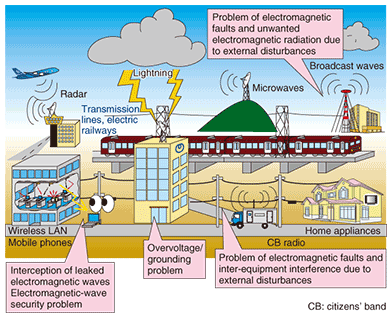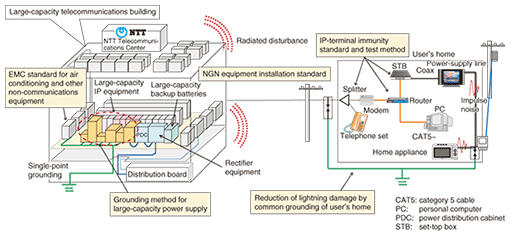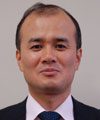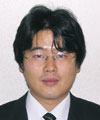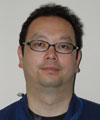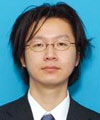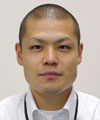 |
|||||||||||||
|
|
|||||||||||||
|
Special Feature: NGN Focus Vol. 7, No. 11, pp. 30–33, Nov. 2009. https://doi.org/10.53829/ntr200911sf7 Electromagnetic Compatibility Technology Supporting the NGN InfrastructureAbstractThis article outlines new electromagnetic compatibility (EMC) problems created by the introduction of the wide variety of infrastructure facilities being deployed to provide diverse services on the Next Generation Network (NGN) and describes NTT°«s approach to solving them.
1. IntroductionThe IP (Internet protocol) network for the Next Generation Network (NGN) era will connect personal computers, video equipment, and home appliances in addition to telecommunication devices for making voice calls. These various types of equipment are increasingly using high-speed signal-processing circuits to achieve advanced functions and inverter power supplies to save energy. At the same time, the use of new wireless devices such as digital terrestrial receivers, mobile phones, and wireless local area network (LAN) transceivers is spreading rapidly. All such equipment, whether intentionally or unintentionally, radiates electromagnetic waves. Even the natural world emits electromagnetic radiation in the form of lightning, terrestrial magnetism, etc. From an electromagnetic viewpoint, the environmental conditions that surround us all can be called the electromagnetic environment [1], and as shown in Fig. 1, the electromagnetic environment surrounding the NGN is becoming increasingly complicated. EMC problems in this electromagnetic environment are also becoming complicated, but they must be solved if we are to construct a safe and secure network.
EMC problems can be divided into three main types: emissions, immunity, and overvoltage/grounding. For emissions, we consider methods that can prevent electromagnetic disturbances emitted from equipment from causing faulty operation in other equipment. For immunity, we consider methods that enable equipment to operate stably and faultlessly even if it receives unwanted electromagnetic energy (electromagnetic noise) from other equipment. Finally, for overvoltage/grounding, we consider (1) protection against excess voltages or currents that can be caused by natural phenomena such as lightning, inductance from transmission lines, and overvoltage due to power accidents and (2) grounding methods to achieve such protection. 2. Infrastructure facilities in the NGNTelecommunications centers are deploying large-capacity IP equipment for the NGN era. This IP equipment comes from multiple vendors and the deployment of equipment having different power supply methods is increasing. Until recently, it was common to use DC48V power supply systems for feeding power to communication facilities, but with the deployment of IP equipment, the use of AC200/100V systems has been on the increase. As a result, it is difficult to maintain an efficient supply of power by DC48V systems as equipment capacities rise. To deal with this problem, studies are being performed on high-voltage DC power supply systems. We can therefore envision that telecommunications centers in the future will house a mixture of power-supply systems and that grounding systems will become more important than ever to ensure a good EMC environment and protection from overvoltage. We can also expect that the use of auxiliary equipment such as air conditioning units will increase as telecommunications equipment capacity rises and that it will also be impossible to ignore EMC issues for this equipment. Meanwhile, the user environment is being transformed by networking as electric and electronic devices incorporating wired and wireless communications technologies are coming to be connected to the telecommunications network. This results in a complicated EMC environment even in the user°«s home. In short, the electromagnetic environment surrounding communications is undergoing major changes as the NGN continues to spread, and EMC technology for dealing with these changes is becoming increasingly important. EMC issues in NGN infrastructure facilities are summarized in Fig. 2 [2].
3. NTT°«s approach to EMC problems in the NGNA variety of research has been performed on the quality of service (QoS) on the NGN IP network [3]. The proposed quality control technologies operate on the premise of guaranteeing quality in lower layers such as the physical and data-link layers. The EMC problems are directly related to the physical layer and are extremely important from the viewpoint of communications quality. Immunity specifications [4] for telecommunications equipment have up to now called for normal operation in the face of continuous electromagnetic noise, but in the case of sudden impulse noise, they have allowed for faulty operation at that moment. Thus, under these specifications, services with realtime requirements such as video delivery cannot avoid video disturbances due to impulse noise. Therefore, requirements for services that demand high reliability should be made to coincide with EMC requirements. For this purpose, NTT is working to clarify impulse noise and the factors behind IP layer degradation. The grounding system is therefore of prime importance when we consider the EMC environment in a telecommunications center. However, when a high-voltage DC power supply system is introduced, human safety takes precedence over EMC problems. The high voltage means that the grounding system must provide facilities that cannot give maintenance workers electrical shocks and that do not cause serious injury if an electric-shock accident does occur. For this reason, we are studying grounding systems that can solve the EMC problems after satisfying human safety requirements. Furthermore, with regard to security, countermeasures against information leakage from electromagnetic disturbances emitted from electronic devices and the protection of electronic devices from intense electromagnetic waves from the outside are being pursued as an EMC problem. At NTT, we specify EMC-related in-house standards and technical requirements not only to gain EMC compliance as a corporation but also to improve the quality of procured equipment from an EMC viewpoint. In this way, we are supporting the construction of a highly reliable NGN. We are also actively involved in international and domestic EMC-related standardization efforts [5] as a foundation of all EMC efforts. References
|
|||||||||||||








